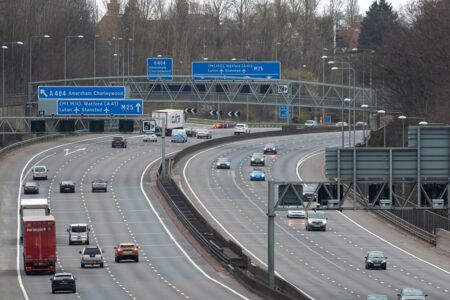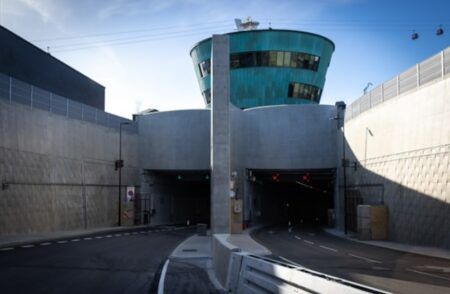A network of unattended ALPR-equipped (automatic license plate recognition) CCTV cameras has led to major improvements in road safety and reductions in traffic congestion in the London Borough of Enfield.
Enfield installed the system nearly three years ago in an attempt to overcome dangerous and congestion-forming driving behaviors, such as illegal turns, blocking yellow box junctions, and prohibited use of bus lanes. The borough’s system uses ROADflow camera technology from Systems Engineering & Assessment (SEA), part of the Cohort group of companies.
Seven ROADflow Flexi Bus Lane unattended 24/7 devices were installed, alongside 12 ROADflow Motion unattended 24/7 rapidly re-deployable moving traffic enforcement devices, to identify incidents such as banned maneuvers and box junction infringements, as well as being able to enforce all other parking contraventions.
The unattended ROADflow cameras all operate different enforcement days and hours. Without the need for CCTV operators, the system can enforce 24/7 at each site if required, ensuring increased compliance with significantly less effort and cost. ROADflow cameras require no roadside cabinet and are powered by a single main supply. They are lamp post, column or building-mounted, and weigh just over 21 lb (9.6kg) for the entire package. The technology’s unique 3D tracking and flexible rules engine works in the most challenging conditions, including night-time or rainy images, which often confuse simpler video analytics-based systems. More accurate automatic offence detection and fewer false positives means less work for reviewers.
SEA’s technology also overcomes the problem when vehicles bunch tightly together or license plates can get obscured by other vehicles, pedestrians or cyclists. While this often means that it is difficult to continuously track vehicles through a scene, the advanced 3D tracking enables the system to maintain vehicle position, even when this occurs.
Using 3G communications, ROADflow evidence packs containing pre- and post-trigger color context video show movement of the offending vehicle, license plate image, and the exact date, time and location of the violation. These are reviewed by enforcement services company NSL, using the ROADflow Replay rapid review suite, which then automatically pre-populates Imperial Civil Enforcement Solutions’ 3-Sixty notice processing software.
The simple modularity of the ROADflow technology, which enables cameras to be added easily to the system using its plug-and-play capability, meant that Enfield was able to augment its system over a period of time, taking into account budgetary considerations.
The results have been marked, with the switch from attended to unattended bus lane camera enforcement leading to a 20-fold rise in detected offences, along with a 50% increase across the whole spectrum of traffic infringements.
“There are several advantages to the ROADflow system. It doesn’t require an operator; it’s a robust system and it’s good at capturing a number of contraventions, probably five times as many as an attended CCTV camera operator would pick up,” explained Borough of Enfield CCTV and electric vehicles coordinator Ivor Norman. “It’s the best thing we have ever done in terms of altering motorists’ habits towards road safety and making the roads of Enfield better to drive on.”




